Audio

124 products
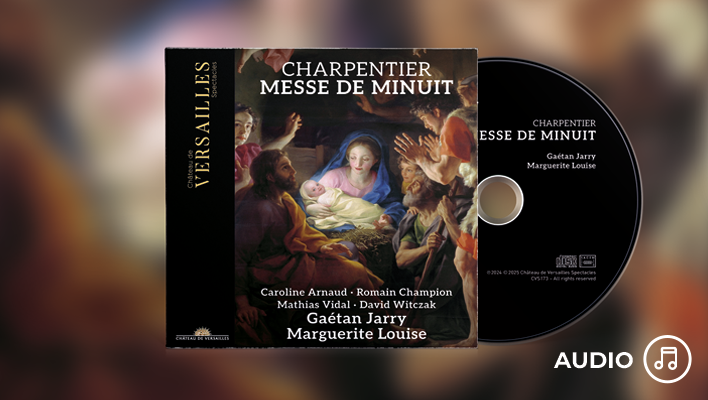
Charpentier : Messe de Minuit
While the Te Deum brought Charpentier fame, the Messe de Minuit fully showcases his genius, gracefully blending the sacred and the secular. Inspired by popular melodies, it captivates with its freshness, joy, and refinement. Gaétan Jarry and the ensemble Marguerite Louise bring out its fervour and the true spirit of Christmas.

Vivaldi : Gloria e Imeneo
In 1725, Vivaldi composed a serenata to celebrate the marriage of Louis XV and Marie Leszczynska. Centred on the figures of Imeneo and Gloria, the work exalts union and majesty in a dazzling final duet. At once an artistic tribute and a diplomatic gesture, it radiates grace and virtuosity.
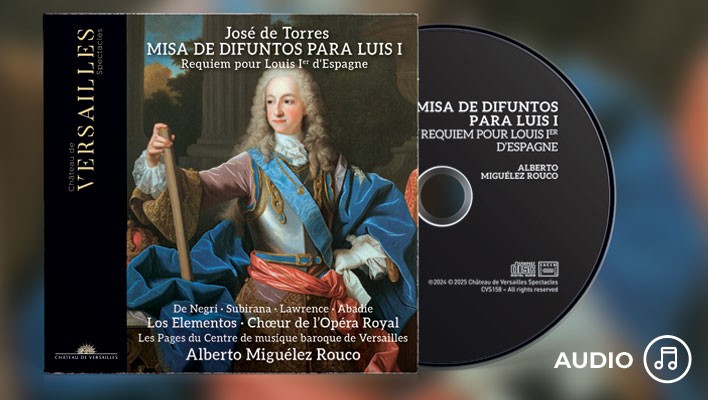
Requiem pour Louis Ier d'Espagne
Requiem pour Louis Ier d'Espagne
In 1725, José de Torres honoured Louis I with his Misa de difuntos, blending French influences with the richness of Spanish Baroque. Francisco Corselli’s Dies Irae completes this tribute to Philip V. Alberto Miguélez Rouco brings these rare works vividly back to life at the Royal Chapel of Versailles.
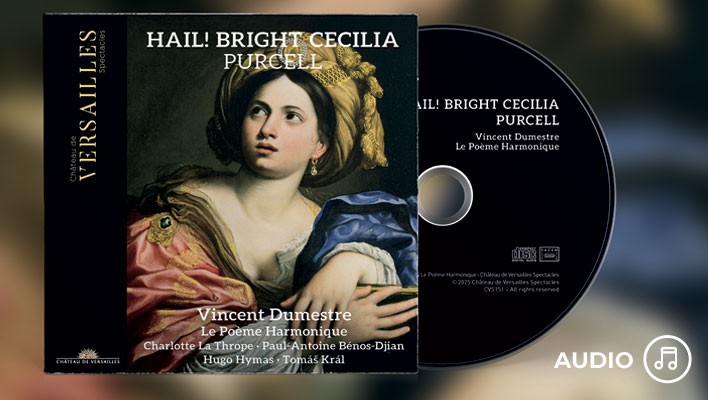
Purcell : Hail ! Bright Cecilia
Purcell : Hail ! Bright Cecilia
With Hail! Bright Cecilia, Purcell honours the patron saint of music in a magnificent ode that epitomises the English Baroque. Composed in 1692, it captures the artistic vitality of seventeenth-century England. Vincent Dumestre and Le Poème Harmonique bring out its full expressive richness in a performance both vibrant and finely nuanced.

Porpora Polifemo
In 1735, Porpora challenged Handel with Polifemo, a baroque opera in which the love between Galatea and Acis is tested by the cyclops’s jealousy. Among gods and mortals, intrigue and passion are deftly interwoven under the inspired direction of Stefan Plewniak.
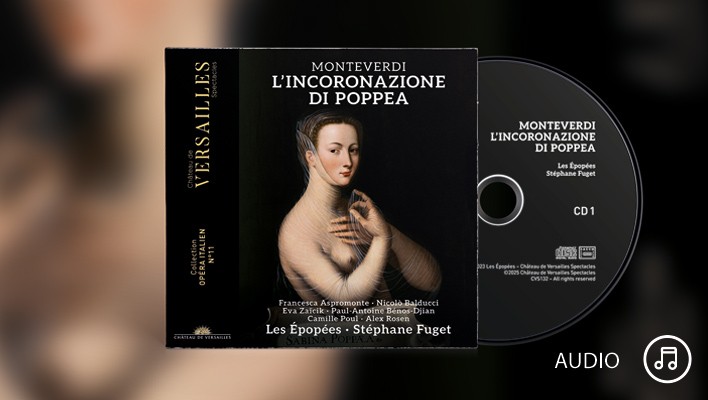
L’Incoronazione di Poppea
Poppaea, Nero’s mistress, wields manipulation and cruelty to attain power, orchestrating intrigues and deaths around her. Under Monteverdi’s music and Stéphane Fuget’s direction, her rise becomes a mesmerizing celebration of limitless desire and ambition.
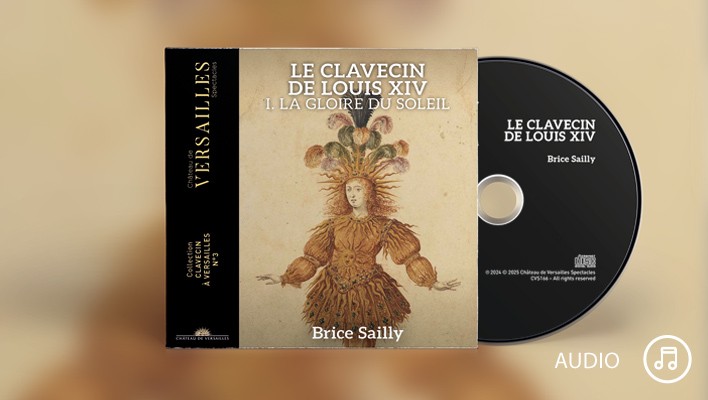
Le Clavecin de Louis XIV
This work evokes Louis XIV’s musical awakening to the harpsichord, in the company of the most celebrated musicians of his time. At that period, French harpsichord making was flourishing, notably thanks to Chambonnières, who published the first printed scores in 1670. This diverse repertoire reflects the richness of the Grand Siècle, beautifully brought to life by Brice Sailly’s performance.
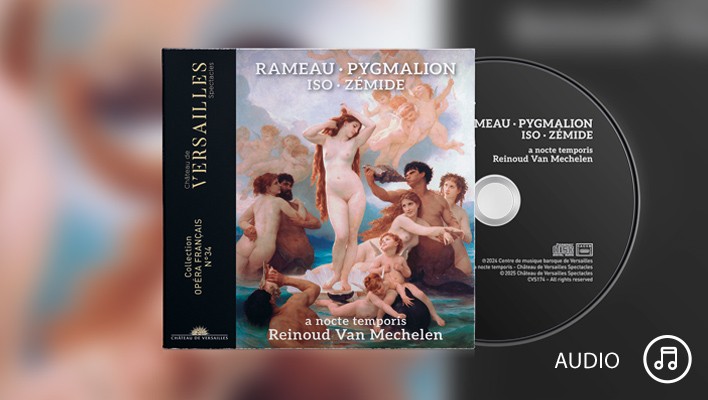
Pygmalion - Zémide
This programme brings together Rameau’s Pygmalion and Pierre Iso’s Zémide, two works where love asserts its power with both intensity and delicacy. Under the inspired direction of Reinoud Van Mechelen, Baroque music and emotion intertwine in a dazzling, expressive performance.
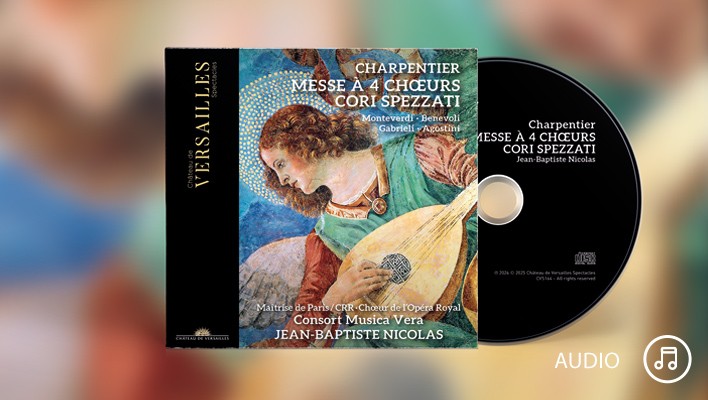
Charpentier : Messe à 4 Chœurs · Cori Spezzati
Charpentier : Messe à 4 Chœurs · Cori Spezzati
Charpentier's Messe à quatre chœurs combines French tradition with Italian Baroque, creating a dynamic interplay between four ensembles. Jean-Baptiste Nicolas brings a performance that balances precision and emotion.
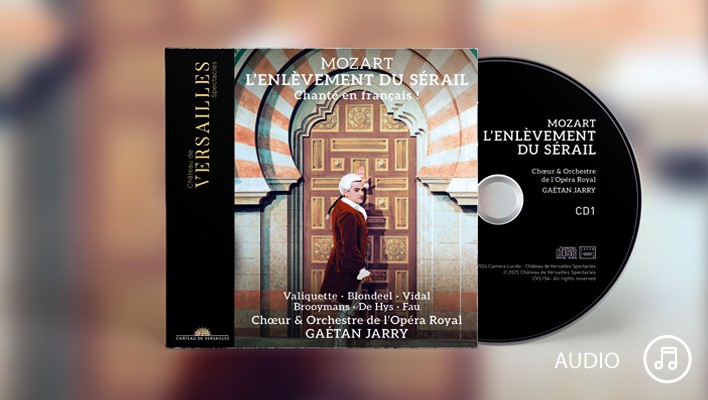
L'Enlèvement du Sérail
In an Ottoman palace, noble captive Constance is desired by Pasha Selim, while her devoted lover Belmont braves danger to rescue her. Disguises, plots, and passion drive this lively Mozart comedy, performed in French under the direction of Gaétan Jarry.
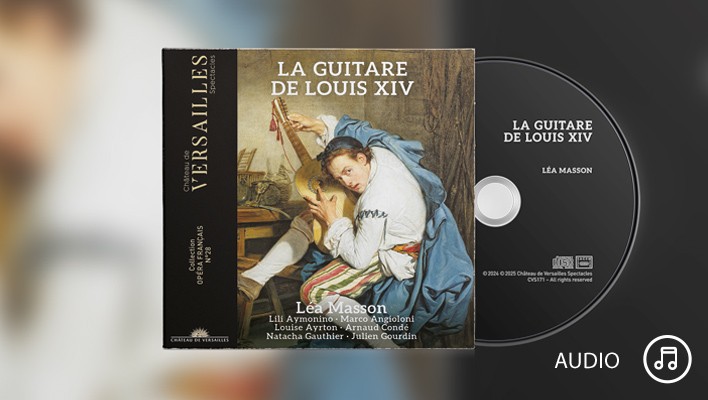
La Guitare de Louis XIV
More than just a dancer, Louis XIV was also a musician king. Influenced by his mother, he learned the lute and then the guitar, transforming this once-popular instrument into a symbol of royal refinement and a political tool to shape his image and promote cultural unity.

Lully - Atys
Atys stands as the pinnacle of Lully's triumph, having become the opera of the King. The piece weaves love as its central thread, blending human and divine passions through the tragic fates of Atys and Cybèle. Leonardo García-Alarcón conducts this rendition with a subtlety that brings out the full beauty of Lully's music.

Guilain . Morel - Dédicaces
Jean Adam Guilain left behind majestic and melancholic suites, now seldom performed. These are heard here for the first time on the Great Organs of Versailles. Thomas Ospital and the Ensemble Saint-Honoré perform them with great finesse.

Clérambault - Te Deum - Histoire de la femme adultère
Clérambault - Te Deum - Histoire de la femme adultère
Clérambault brings new life to the oratorio with L'histoire de la femme adultère. A nocte temporis, under the direction of Reinoud Van Mechelen, delivers a striking performance. The Choeur de Chambre de Namur shines in a grand and majestic Te Deum.

Platée - Rameau
Comic opera-ballet in a prologue and three acts, with a libretto by Adrien-Joseph Le Valois d’Orville, first performed at the Grand Manège in Versailles in 1745.

Ernelinde - Princesse de Norvège
Ernelinde - Princesse de Norvège
Princess Ernelinde, torn between her love for King Sandomir and her duty to her father, finds herself at the heart of a lyrical tragedy. Philidor's innovative composition foreshadows Gluck's reforms. Under the direction of Martin Wåhlberg, this opera, forgotten for two centuries, is brought back to life.

Atalia
After eliminating the royal family, Atalia takes control of Jerusalem. Seven years later, the High Priest and his allies restore the young Joas to the throne. Emmanuel Resche-Caserta and Ensemble Hemiolia bring this powerful oratorio to life, where justice and innocence ultimately prevail.

Alceste ou Le Triomphe d'Alcide
Alceste ou Le Triomphe d'Alcide
In 1674, Lully and Quinault premiered Alceste, a tragic opera that blends Greek mythology with Baroque style, which was met with success at the court of Louis XIV. The opera played a key role in establishing tragic opera as a major genre. Stéphane Fuget, with Les Epopées and the Chœur de l’Opéra Royal, masterfully brings this world of love and sacrifice to life.

Suite d'Armide ou Jérusalem Délivrée
Suite d'Armide ou Jérusalem Délivrée
Suite d'Armide or Jerusalem Delivered, composed by Regent Philippe d'Orléans and first published in 1704, showcases exceptional musical talent. Leonardo García Alarcón and Cappella Mediterranea masterfully bring this largely forgotten genius to life.

Charpentier : Messe de Minuit
While the Te Deum brought Charpentier fame, the Messe de Minuit fully showcases his genius, gracefully blending the sacred and the secular. Inspired by popular melodies, it captivates with its freshness, joy, and refinement. Gaétan Jarry and the ensemble Marguerite Louise bring out its fervour and the true spirit of Christmas.

Vivaldi : Gloria e Imeneo
In 1725, Vivaldi composed a serenata to celebrate the marriage of Louis XV and Marie Leszczynska. Centred on the figures of Imeneo and Gloria, the work exalts union and majesty in a dazzling final duet. At once an artistic tribute and a diplomatic gesture, it radiates grace and virtuosity.

Requiem pour Louis Ier d'Espagne
Requiem pour Louis Ier d'Espagne
In 1725, José de Torres honoured Louis I with his Misa de difuntos, blending French influences with the richness of Spanish Baroque. Francisco Corselli’s Dies Irae completes this tribute to Philip V. Alberto Miguélez Rouco brings these rare works vividly back to life at the Royal Chapel of Versailles.

Purcell : Hail ! Bright Cecilia
Purcell : Hail ! Bright Cecilia
With Hail! Bright Cecilia, Purcell honours the patron saint of music in a magnificent ode that epitomises the English Baroque. Composed in 1692, it captures the artistic vitality of seventeenth-century England. Vincent Dumestre and Le Poème Harmonique bring out its full expressive richness in a performance both vibrant and finely nuanced.

Porpora Polifemo
In 1735, Porpora challenged Handel with Polifemo, a baroque opera in which the love between Galatea and Acis is tested by the cyclops’s jealousy. Among gods and mortals, intrigue and passion are deftly interwoven under the inspired direction of Stefan Plewniak.

L’Incoronazione di Poppea
Poppaea, Nero’s mistress, wields manipulation and cruelty to attain power, orchestrating intrigues and deaths around her. Under Monteverdi’s music and Stéphane Fuget’s direction, her rise becomes a mesmerizing celebration of limitless desire and ambition.

Le Clavecin de Louis XIV
This work evokes Louis XIV’s musical awakening to the harpsichord, in the company of the most celebrated musicians of his time. At that period, French harpsichord making was flourishing, notably thanks to Chambonnières, who published the first printed scores in 1670. This diverse repertoire reflects the richness of the Grand Siècle, beautifully brought to life by Brice Sailly’s performance.

Pygmalion - Zémide
This programme brings together Rameau’s Pygmalion and Pierre Iso’s Zémide, two works where love asserts its power with both intensity and delicacy. Under the inspired direction of Reinoud Van Mechelen, Baroque music and emotion intertwine in a dazzling, expressive performance.

Charpentier : Messe à 4 Chœurs · Cori Spezzati
Charpentier : Messe à 4 Chœurs · Cori Spezzati
Charpentier's Messe à quatre chœurs combines French tradition with Italian Baroque, creating a dynamic interplay between four ensembles. Jean-Baptiste Nicolas brings a performance that balances precision and emotion.

L'Enlèvement du Sérail
In an Ottoman palace, noble captive Constance is desired by Pasha Selim, while her devoted lover Belmont braves danger to rescue her. Disguises, plots, and passion drive this lively Mozart comedy, performed in French under the direction of Gaétan Jarry.

La Guitare de Louis XIV
More than just a dancer, Louis XIV was also a musician king. Influenced by his mother, he learned the lute and then the guitar, transforming this once-popular instrument into a symbol of royal refinement and a political tool to shape his image and promote cultural unity.

Lully - Atys
Atys stands as the pinnacle of Lully's triumph, having become the opera of the King. The piece weaves love as its central thread, blending human and divine passions through the tragic fates of Atys and Cybèle. Leonardo García-Alarcón conducts this rendition with a subtlety that brings out the full beauty of Lully's music.

Guilain . Morel - Dédicaces
Jean Adam Guilain left behind majestic and melancholic suites, now seldom performed. These are heard here for the first time on the Great Organs of Versailles. Thomas Ospital and the Ensemble Saint-Honoré perform them with great finesse.

Clérambault - Te Deum - Histoire de la femme adultère
Clérambault - Te Deum - Histoire de la femme adultère
Clérambault brings new life to the oratorio with L'histoire de la femme adultère. A nocte temporis, under the direction of Reinoud Van Mechelen, delivers a striking performance. The Choeur de Chambre de Namur shines in a grand and majestic Te Deum.

Platée - Rameau
Comic opera-ballet in a prologue and three acts, with a libretto by Adrien-Joseph Le Valois d’Orville, first performed at the Grand Manège in Versailles in 1745.

Ernelinde - Princesse de Norvège
Ernelinde - Princesse de Norvège
Princess Ernelinde, torn between her love for King Sandomir and her duty to her father, finds herself at the heart of a lyrical tragedy. Philidor's innovative composition foreshadows Gluck's reforms. Under the direction of Martin Wåhlberg, this opera, forgotten for two centuries, is brought back to life.

Atalia
After eliminating the royal family, Atalia takes control of Jerusalem. Seven years later, the High Priest and his allies restore the young Joas to the throne. Emmanuel Resche-Caserta and Ensemble Hemiolia bring this powerful oratorio to life, where justice and innocence ultimately prevail.

Alceste ou Le Triomphe d'Alcide
Alceste ou Le Triomphe d'Alcide
In 1674, Lully and Quinault premiered Alceste, a tragic opera that blends Greek mythology with Baroque style, which was met with success at the court of Louis XIV. The opera played a key role in establishing tragic opera as a major genre. Stéphane Fuget, with Les Epopées and the Chœur de l’Opéra Royal, masterfully brings this world of love and sacrifice to life.

Suite d'Armide ou Jérusalem Délivrée
Suite d'Armide ou Jérusalem Délivrée
Suite d'Armide or Jerusalem Delivered, composed by Regent Philippe d'Orléans and first published in 1704, showcases exceptional musical talent. Leonardo García Alarcón and Cappella Mediterranea masterfully bring this largely forgotten genius to life.

